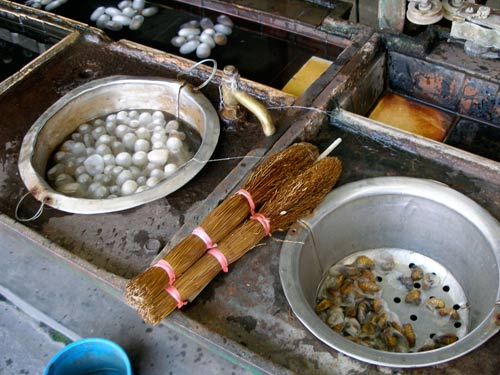
The cocoons are placed in boiling water (left) and the dead larvae are disposed of (right). To make one silk shirt requires 3,000 single cocoons.
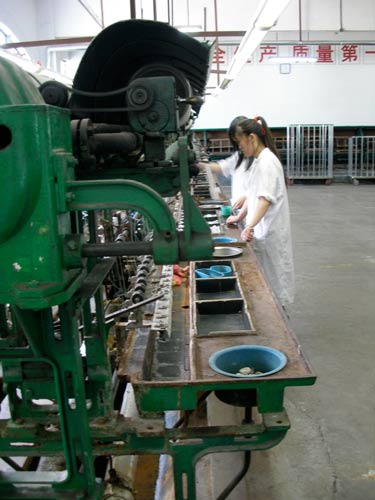
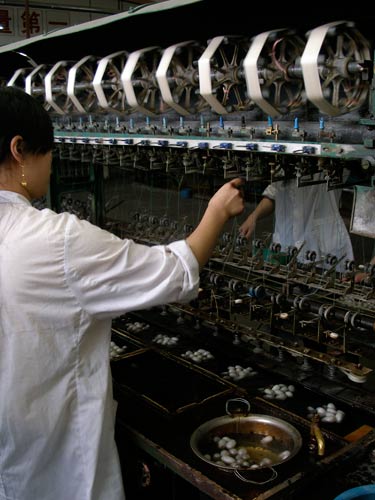
The silk thread is run up from the coccoon floating in the water below.
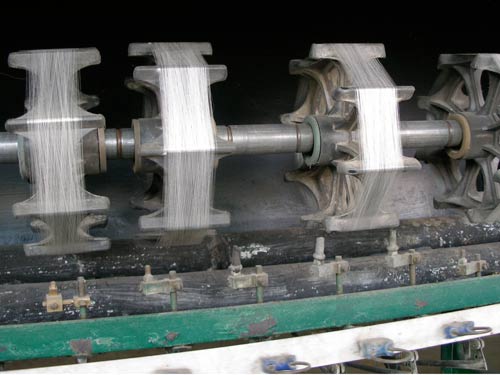
The wheels rotate, unraveling the cocoon
Double cocoon processing:
Next we headed downtown.
Shanghai is the largest city in China, and one of the largest metropolitan areas in the world, with over 20 million people. Located at the mouth of the Yangtze River, the city flourished in the 19th century due to its favorable port location, becoming a center of commerce between east and west. Its name comes from Shang (over, above) and Hai (sea).
China has changed a lot in recent history. In the 1960's - 70's, people only earned about $6 per month, received a limited number of coupons to buy food, had to make their own clothes, had only public bathrooms and shared kitchens, and rode bicycles. In 1979, China reopened to the world. People got apartments, refrigerators, air-conditioners, cars, and could travel.
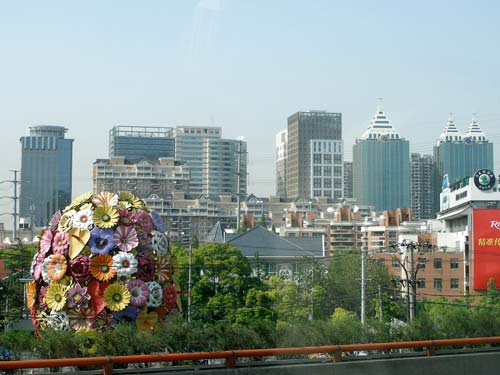
All of these modern buildings are less than 20 years old.
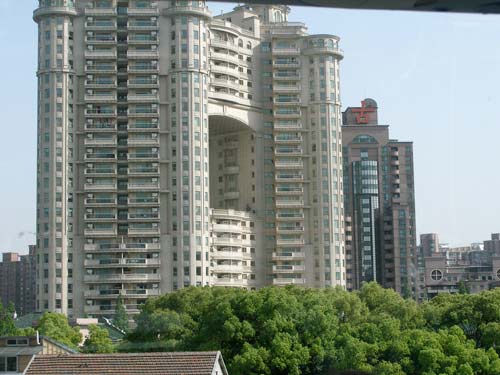
Several buildings are built with giant holes going completely through them. Supposedly this is good feng shui.
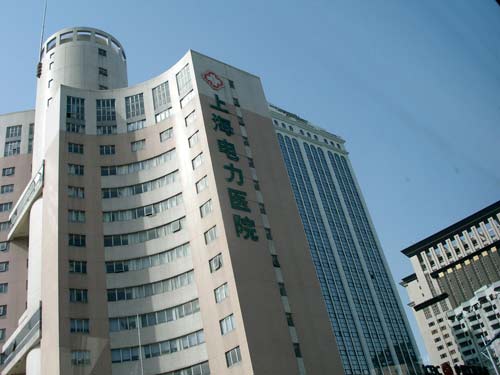
Each building is required to have a unique design.
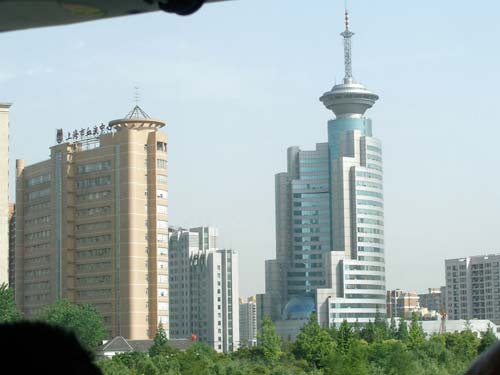
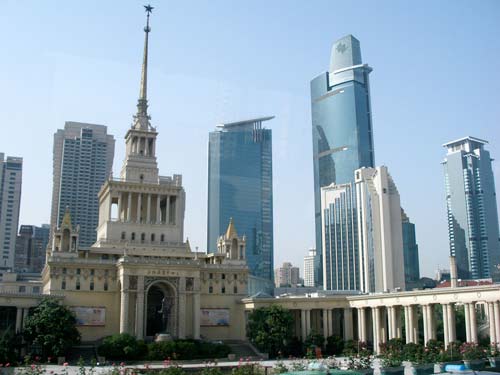
Completed in 1955, the Shanghai Exhibition Center is a center for important political, economic, science & technology, and cultural activities.
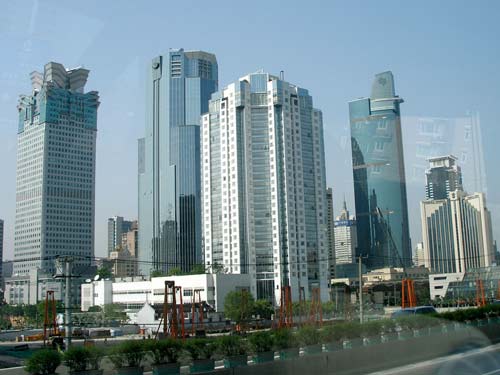

The JW Marriott Hotel Shanghai at Tomorrow Square has a distinct pointed top.
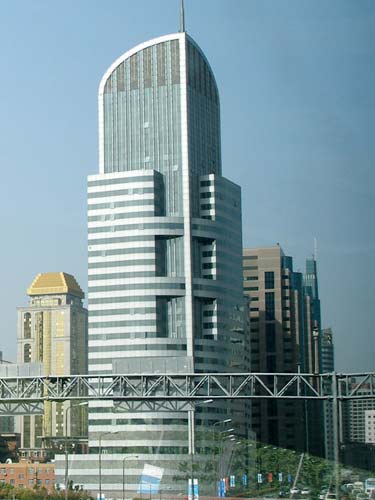

The Shanghai Museum (left) contains over 120,000 pieces of ancient Chinese art, including bronze, ceramics, calligraphy, furniture, jades, ancient coins, paintings, seals, sculptures, minority art and foreign art. The museum was first opened in 1952 but moved to its current building in 1996.
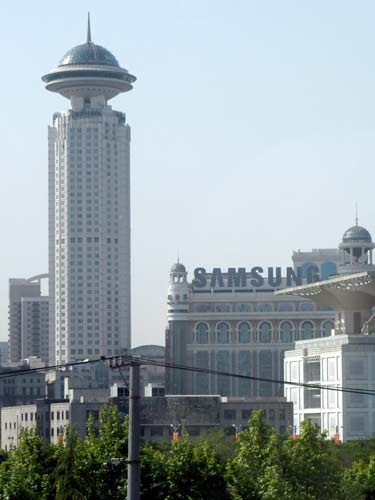
At the Radisson Hotel, a revolving restaurant on the 45th floor offers breathtaking city views.
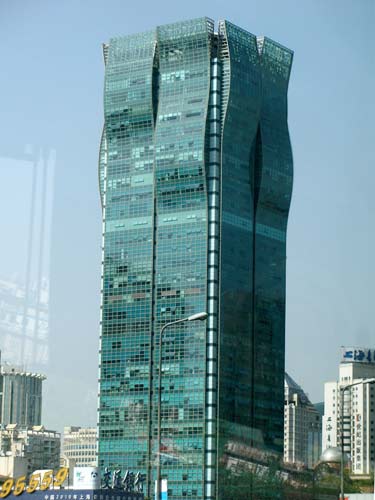

Built in 1930 with the name of Nanking Theatre, the Shanghai Concert Hall has a classical European style. In 2002, the building was relocated to this spot instead of being demolished and rebuilt due to the city's downtown reconstruction project. The removal plan was the largest and most difficult building relocation project ever attempted in the country.
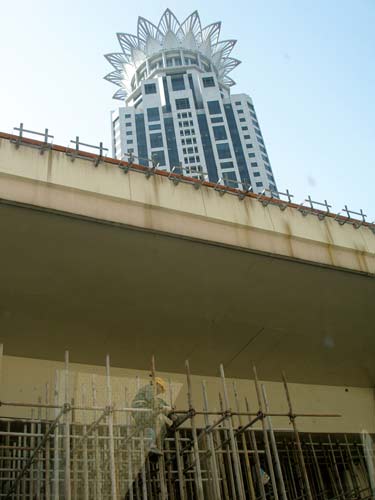
A construction worker takes a break high in the rafters.

A complex web of elevated interchanges
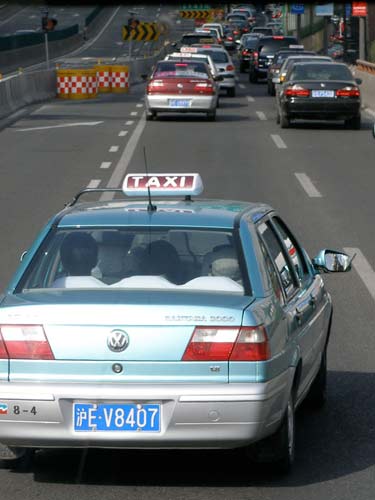
Traffic accident - This taxi ran into the side of our bus. After a heated debate between their driver and ours, they eventually went on their way with a broken side mirror.
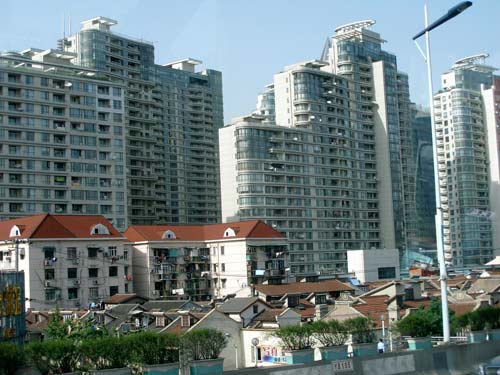
Eventually all the small old buildings will be removed.

Laundry drying on the line alongside satellite dishes
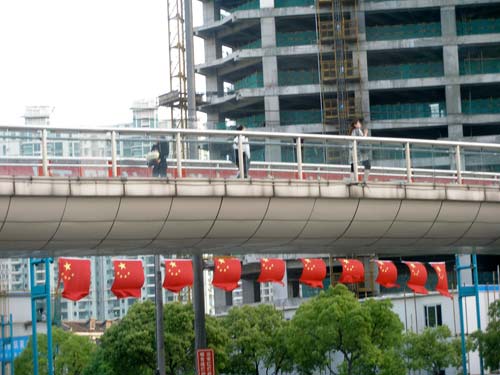
Pedestrian walkways
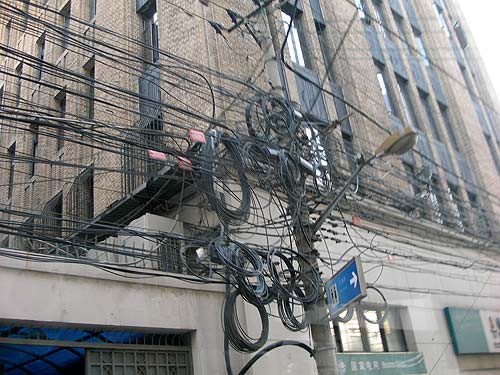
A snarl of electrical wires - the price for all this modern technology

